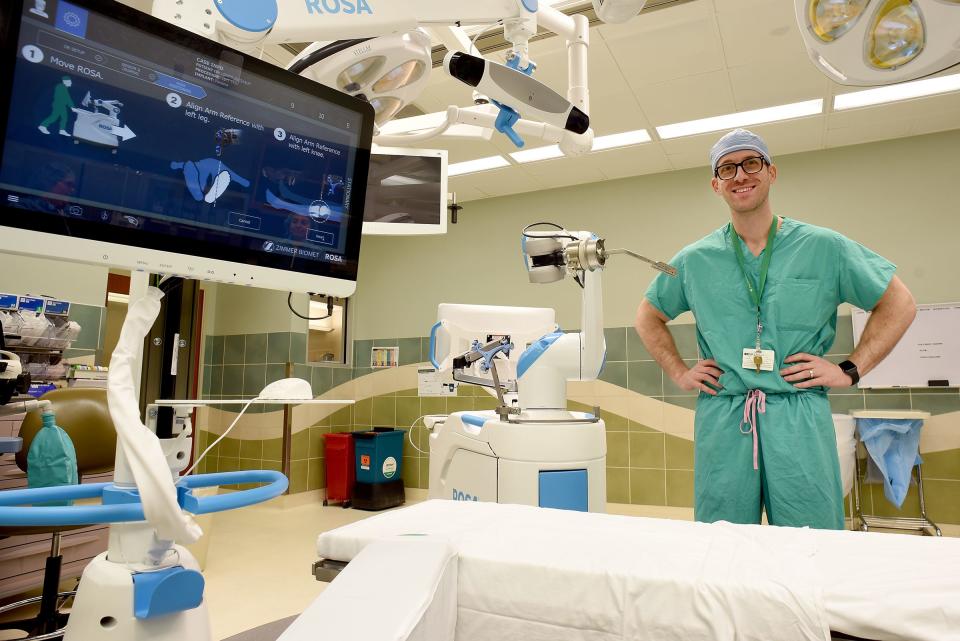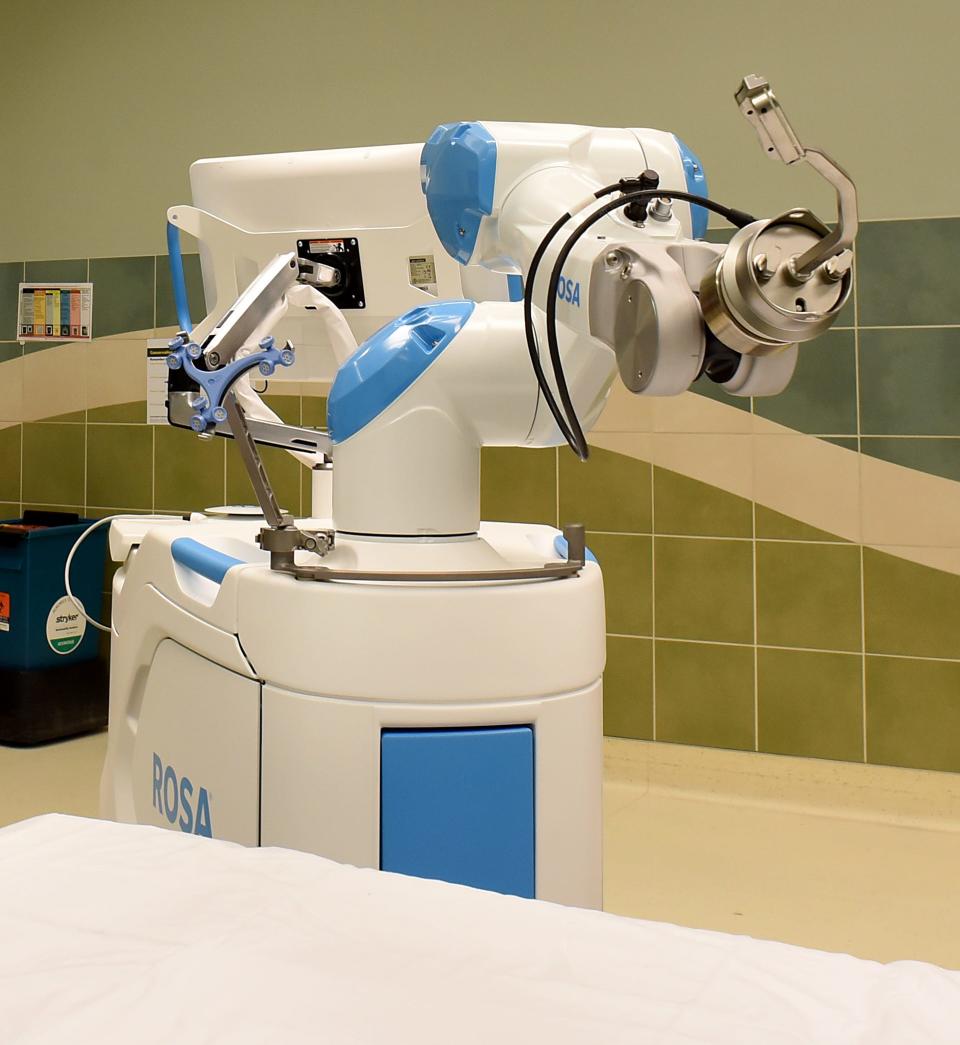'The future of hip and knee replacement': Robotic technology helping with surgery in Monroe
MONROE — ProMedica Monroe Regional Hospital is one of just two area ProMedica facilities using robotic technology for orthopaedic surgeries.
“Many hospital systems in the area don’t have it, even the largest,” said Dr. Mark Zekaj, chief of orthopaedic surgery for ProMedica Monroe Regional Hospital. “I’m very happy to offer this. This is the future of hip and knee replacement.”
ProMedica Wildwood Orthopaedic and Spine Hospital in Toledo also has robotic surgery technology, and a device is coming soon to ProMedica Charles and Virginia Hickman Hospital in Adrian.

ProMedica Monroe’s orthopaedic services department, which has two surgeons, performs total hip, total knee, small hand and fracture repair surgeries.
The doctors have been using the new robotic device since early November. So far, it’s been used for hip and knee replacement surgeries. Next, it also will be used for shoulder surgeries, Zekaj said.
“We’ve done over 100 in Monroe,” said Zekaj, who’s also performed surgeries with robotic technology at other hospitals and in his residency.
The technology, compared to traditional surgery, allows for more precise cuts and helps the surgeon create a more individualized surgery plan. It also requires less soft tissue manipulation, Zekaj said.
He encouraged ProMedica to bring the technology to Monroe Regional Hospital.
“It was something that I truly believed in,” he said. “I saw the benefits that people are having. I made it my goal to provide the latest cutting-edge technology. It was a benefit to bring the technology to Monroe.”
Zekaj said the robotic device was a “significant capital investment” for ProMedica Monroe Regional Hospital.
Robotic surgery technology has been used in the orthopaedic field for knee surgeries for 18 years and for hip surgeries for about 10 years.
“We continue to see improvements and innovations. It’s improved with time,” Zekaj said.
The particular device purchased for the Monroe hospital has been on the market for about four years.

“It’s two individual machines,” Zekaj said. “One is a robotic arm. It’s about the size of a four-wheel cart, length and width. It’s the height of a regular cart and moves 3 feet. It’s fairy tall and can get up to 6 feet. The second part of the system is the receiver platform. It communicates with the robot arms. It has precision to help with cuts.”
Zekaj said the precision cuts and the ability to create more individualized surgery plans are the biggest benefits of using the robot.
“It offers that absolute precision in the bone cuts. In placing implants, it offers the longest durability and outcome. We’re being able to put the knee and the percision cut in the best anatomical position. It gives us a (view) of the patient’s anatomy, bone and soft tissue. We can make a very tailored plan for each (patient),” he said.
Zekaj said most of his patients elect for robot-assisted surgery.
“The vast majority are very open to it. Anyone can have it. We give them the option for hip and knee for traditional or robotic,” he said.
Recovery time for robotic and traditional surgery is about the same, Zekaj said. Likewise, robotic surgery takes about the same amount of time to complete as traditional surgery, which is about an hour.
“For hips, it saves me time. For total knee, it’s time neutral with robotics. The time depends on the individual and the severity of pathology,” he said.
It’s still unknown whether artificial knees and hips last longer when placed with robot assistance.
“We place patients’ implants in the best position for longest durability. We’re still waiting on the data,” he said.
ProMedica Monroe Regional Hospital’s orthopaedic department is staffed by Zekaj, who came to the Monroe hospital two years ago, and Dr. Andrew Assenmacher, who came to the hospital seven years ago.
Surgeons Dr. Anthony Melonakos and Dr. Kenneth McNamee retired at the end of 2023.
Subscribe Now: For all the latest local developments, breaking news and high school sports content.
Orthopaedic patients are typically older adults, but not always.
“Barring trauma or very bad fractures, most are on the older side. But we are noticing, with people being a lot more active and with a lot more stress, we are starting to see younger patients, in their late 40s and 50s,” Zekaj said.
He said the robotic technology is already drawing patients to ProMedica Monroe Regional Hospital.
“We’re getting patients from other areas, southern Michigan, some out west,” he said. “They are coming from all over.”
— Contact reporter Suzanne Nolan Wisler at swisler@monroenews.com.
This article originally appeared on The Monroe News: Robotic technology helping with hip, knee replacement surgery in Monroe

